Physical Address
304 North Cardinal St.
Dorchester Center, MA 02124
Physical Address
304 North Cardinal St.
Dorchester Center, MA 02124
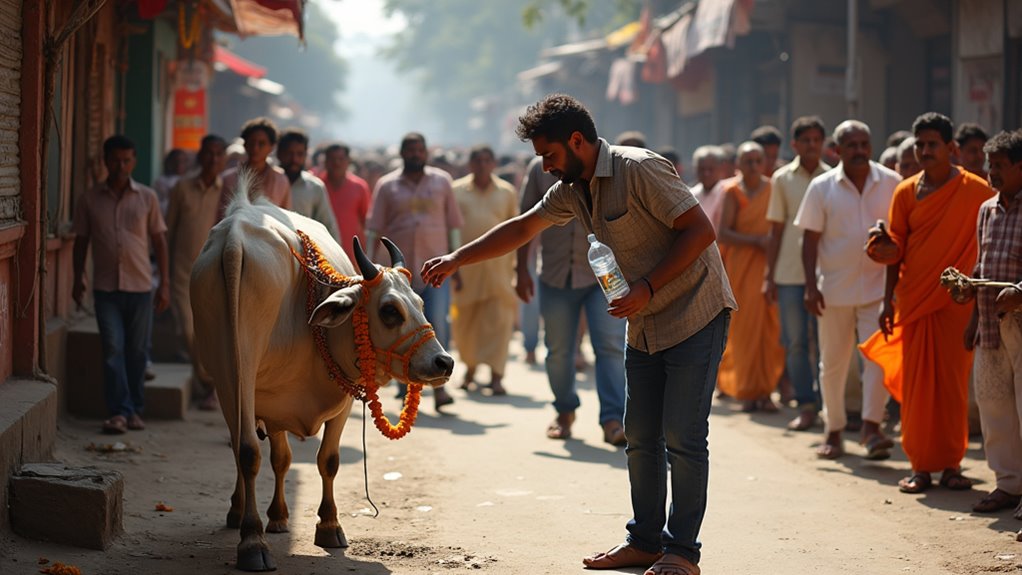
Stumbling through India's cultural maze? These thirteen crucial mistakes could turn your dream vacation into an awkward misadventure.
When visiting India, don’t drink tap water, accept food from strangers, or touch people’s heads. Skip visa-on-arrival assumptions and apply early. Remove shoes at religious sites and dress modestly. Eat only with your right hand and cross streets cautiously. Avoid overpacking your itinerary, photographing without permission, and traveling without insurance. Be vigilant for scams in tourist areas. Each region has distinct customs—understanding these cultural nuances will transform your journey.
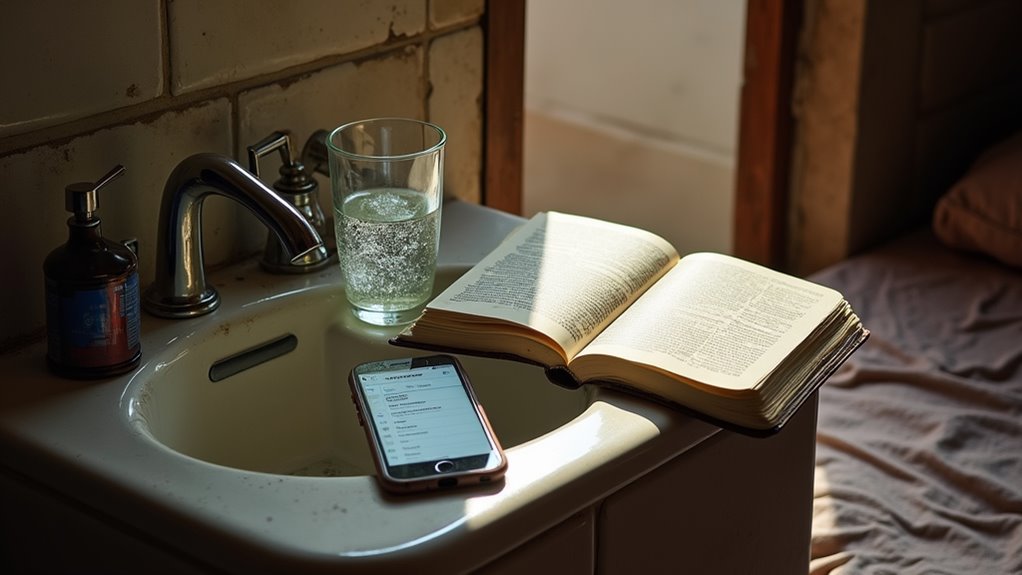
When traveling to India, avoid drinking tap water at all costs unless you’re looking for an express ticket to “Delhi Belly” – the local nickname for severe stomach issues.
With nearly 70% of India’s water contaminated and the country ranking 141st out of 180 countries in drinking water safety, you’re gambling with your health.
India’s water safety ranks a dismal 141st globally—drinking from the tap is a dangerous gamble not worth taking.
Even locals avoid tap water, opting for bottled or purified alternatives. In urban areas, approximately 15% of households rely on bottled water as their primary drinking water source. The aging infrastructure and poor pollution control contribute to water containing harmful bacteria, viruses, and chemicals that cause diarrhea, vomiting, and potentially serious illnesses like typhoid and cholera.
Stick to sealed bottled water, and remember that ice is often made from tap water too. The CDC explicitly warns travelers against consuming Indian tap water – heed this advice.
While avoiding contaminated water can save your trip, failing to research visa requirements beforehand can prevent it from happening altogether. India’s visa policies are strict and non-negotiable. Your passport must be valid for at least six months from arrival and contain two blank pages.
Don’t make these critical mistakes:
Remember that tourist visas require pre-approval through either the traditional paper visa or e-Tourist visa system. The e-Tourist visa comes in three different types with varying validity periods for travelers from over 171 eligible countries. Incomplete applications or documentation errors will result in denied boarding or entry.
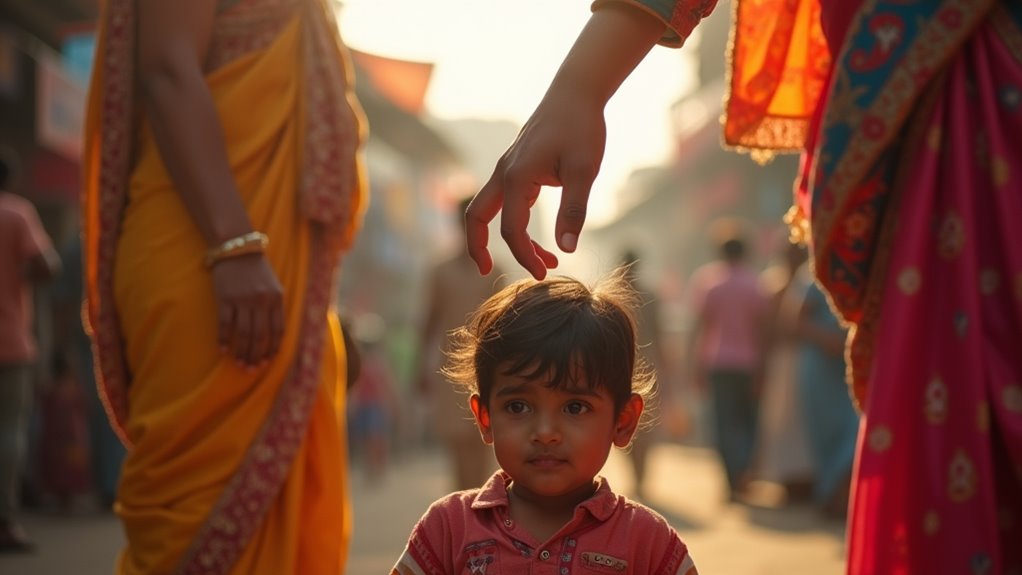
Although it might seem like an innocent gesture to pat a child’s head or ruffle someone’s hair, in India this action constitutes a serious cultural offense. The head is considered the most sacred part of the body in Indian culture, and touching it—even with good intentions—is viewed as disrespectful and invasive.
This taboo applies to people of all ages but is particularly offensive when directed toward elders. While you’ll notice that Indians generally maintain physical distance from each other, the prohibition against head-touching is especially strict. This practice aligns with broader cultural expectations to show marked respect to elders through various gestures and behaviors.
Instead of physical contact, opt for the traditional “namaste” greeting with palms pressed together.
Remember that understanding such cultural sensitivities demonstrates respect for local customs and will help you avoid unintentionally insulting those you meet during your travels.
Religion occupies a central position in Indian daily life, and showing proper respect at religious sites ranks among the most important cultural considerations for visitors. When entering temples, mosques, or other sacred spaces, remember to remove your footwear, dress modestly (covering shoulders and knees), and maintain a quiet demeanor. Always carry a lightweight scarf to cover your head when visiting mosques or certain temples where head coverings are required.
Four essential rules to follow:
Each religious site may have specific regulations, so observe what locals are doing or ask for guidance. Maintaining appropriate behavior in religious settings will enhance your experience and show respect for India’s spiritual traditions.
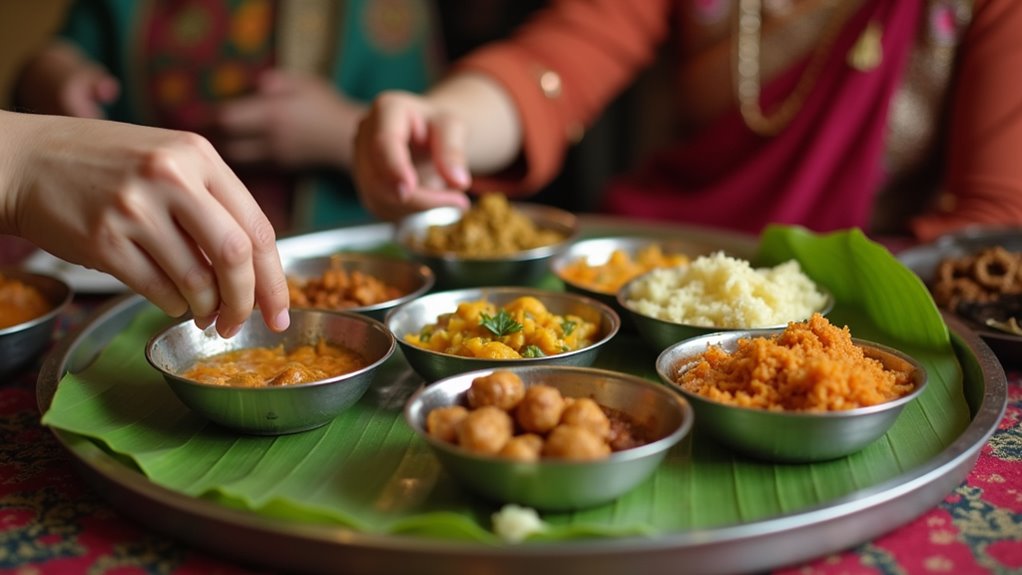
In traditional Indian settings, eating with your left hand represents one of the most common cultural missteps visitors make. Across India’s diverse religions, the left hand is reserved for bathroom hygiene while the right is considered pure and appropriate for meals.
When dining, always use your right hand to eat, receive food, or pass dishes. This isn’t merely a suggestion—using your left hand can be interpreted as disrespectful or unhygienic, potentially offending your hosts.
Even left-handed individuals should make an effort to follow this practice.
The custom reflects deeply held religious values and practical hygiene considerations that have endured for generations. This tradition has been reinforced through Islamic influence that spread throughout the region starting in the 600s C.E. Being mindful of this etiquette shows cultural awareness and respect, particularly when sharing meals with locals or attending traditional gatherings.
Dressing appropriately ranks among the most essential cultural considerations when visiting India’s conservative areas. While urban centers may embrace Western styles, rural regions and religious sites expect modest attire that covers shoulders and knees. Revealing clothing can attract unwanted attention and potentially cause offense.
Modest dress in India shows respect—cover shoulders and knees, especially outside urban areas.
When traveling in India, remember these guidelines:
Following these practices shows respect for local customs and facilitates more meaningful cultural exchanges. Beachwear norms vary significantly across regions, with Goa beaches generally accepting more revealing swimwear while city beaches in places like Mumbai often expect more modest attire.
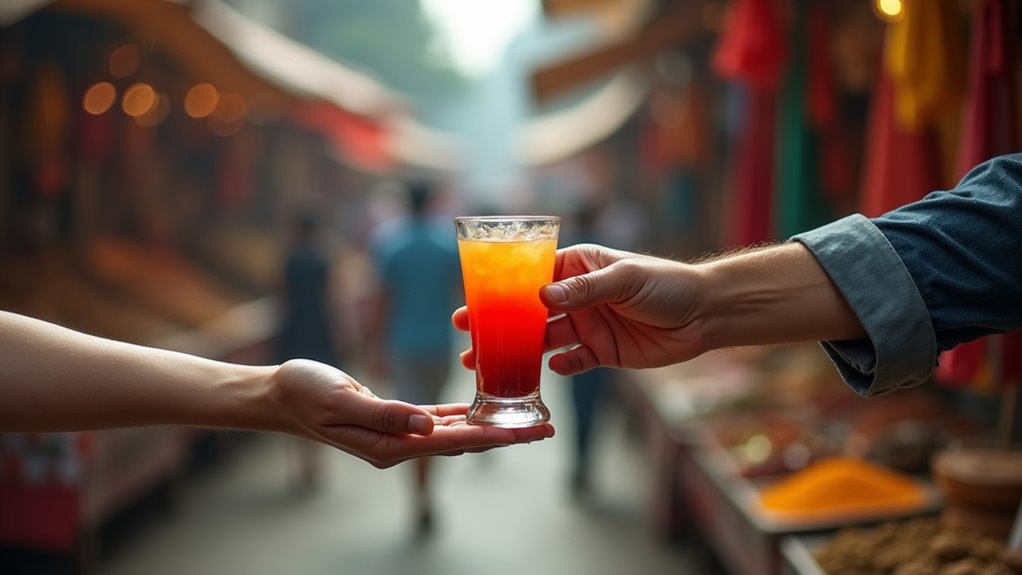
Accepting food or drinks from strangers in India poses serious risks that you shouldn’t underestimate. Multiple cases of spiked consumables targeting travelers have resulted in robbery, theft, and even sexual assault while victims are incapacitated.
The dangers extend beyond criminal intent. Your foreign digestive system may react poorly to unfamiliar bacteria, and unknown ingredients could trigger allergic reactions. Be especially cautious in heightened risk areas like Bengaluru, Mumbai, and Northeastern states where security concerns already exist.
Government travel advisories explicitly warn against this practice, especially on public transportation where such incidents frequently occur.
To stay safe, only consume food and beverages from reputable vendors. Never leave your drinks unattended in social settings. If someone offers you something, politely decline.
Your vigilance is particularly important when traveling alone or in tourist-heavy areas where travelers are specifically targeted.
Taking photographs of people without permission in India can violate legal rights and cultural norms that carry serious consequences. Privacy is constitutionally protected under Article 21, and non-consensual photography can lead to fines up to ₹5 lakh and imprisonment for up to 3 years.
When in India, remember these essential guidelines:
While street photography isn’t explicitly prohibited, someone’s right to privacy always supersedes your desire for a candid shot. This principle was affirmed in the landmark K.S. Puttaswamy case where the Supreme Court of India established privacy as a fundamental right.
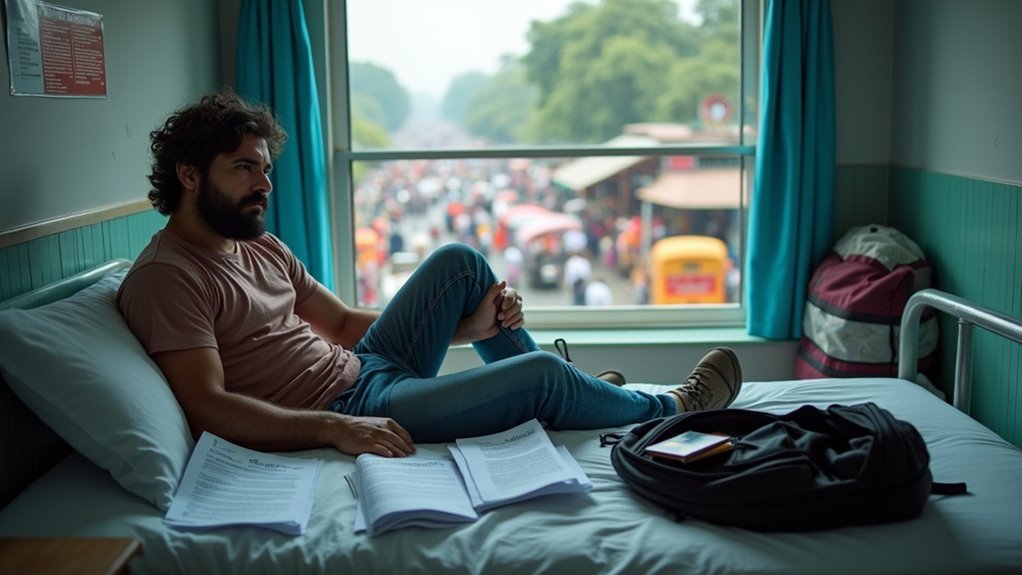
Three major risks await travelers who visit India without proper insurance coverage: devastating medical bills, expensive emergency evacuations, and significant financial losses from trip cancellations or delays.
Don’t gamble with your financial security in a country where medical facilities vary dramatically in quality and cost. India’s travel insurance market is growing rapidly, with more travelers recognizing its essential value. Remember that some countries won’t even allow entry without proof of insurance.
Protect your wallet while exploring India’s unpredictable healthcare landscape—smart travelers make insurance non-negotiable.
Beyond just medical coverage, quality travel insurance protects you against flight cancellations, lost luggage, and provides vital emergency assistance services. The peace of mind alone is worth the investment. Single-trip travel insurance dominates the market, accounting for 61.67% of revenue in 2024.
With India’s travel insurance market projected to reach $3,764.6 million by 2030, you’ll be joining the growing ranks of travelers who prioritize safety over savings.
Walking through India’s chaotic streets can be life-threatening if you ignore local traffic patterns, as pedestrians account for 19% of all road fatalities nationwide. The rapid increase in pedestrian deaths—108% from 2016 to 2022—signals a serious hazard for visitors unfamiliar with local traffic behavior. Over 20% of India’s non-agricultural workers rely on walking for commuting, making pedestrian safety a critical yet often overlooked issue.
To safely navigate Indian streets:
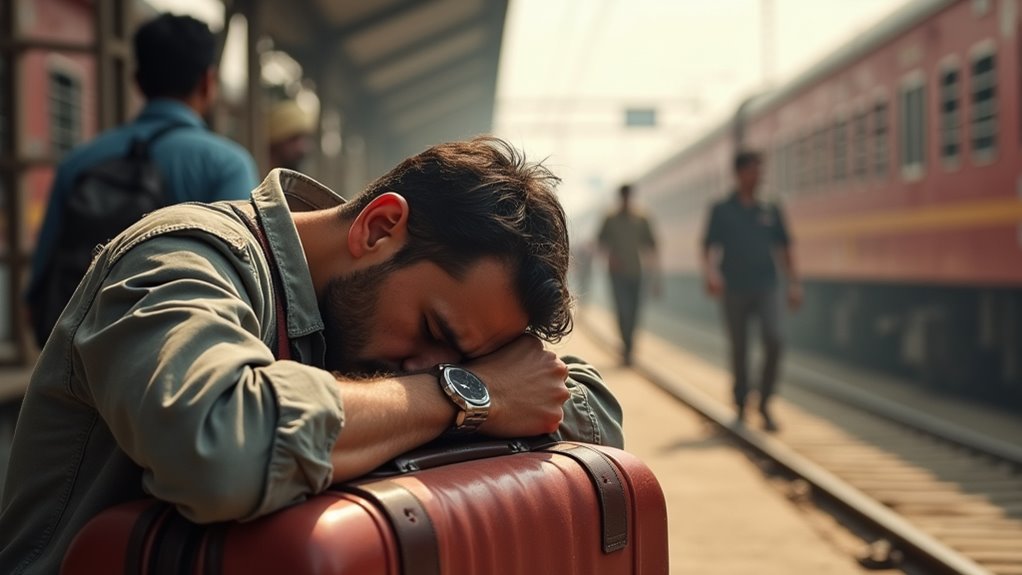
One of the most common mistakes travelers make when exploring India is cramming too many destinations into a limited timeframe. India’s vast size means distances between cities take considerably longer than you’d expect. A journey that looks manageable on paper can quickly turn into a full-day ordeal.
Remember that trains often run late, roads become congested, and security lines at attractions can stretch for hours. You’ll need buffer time between activities, not just for delays but also for rest. Focusing on one region only allows for deeper culture and reduces travel fatigue significantly.
India’s climate can be physically demanding, especially if you’re unaccustomed to the heat.
Instead of racing between north and south India in a single trip, prioritize regions that align with your interests and the season. You’ll enjoy a more immersive experience with breathing room in your schedule.
India’s booming tourist industry unfortunately attracts an abundance of scammers and touts who specifically target foreigners. Nearly half of Indian travelers have fallen victim to travel-related scams, with losses reaching up to $1,000 before trips even begin. Despite thorough research beforehand, 86% of travelers still encounter fraud during their journeys.
To protect yourself from common scams:
Stay alert, carry local currency, and research before your trip. The best defense is awareness and healthy skepticism toward deals that seem too good to be true.
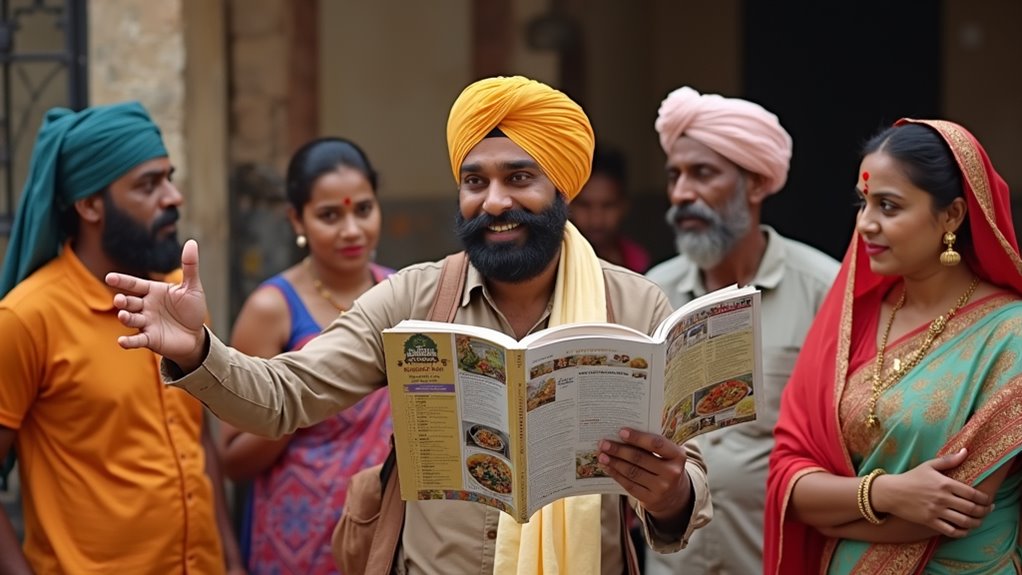
Beyond avoiding scams, perhaps the most significant mistake travelers make is treating India as a single, uniform culture.
Remember that India encompasses 22 major languages across distinct linguistic families, with regional identities stronger than national ones. A conversation style that works in Mumbai might seem abrupt in Chennai. Northern India’s expressive wealth contrasts with Southern India’s understated prosperity and humility.
Religious practices vary dramatically by region too – Hindu customs in Kerala differ from those in Uttar Pradesh. Uttar Pradesh alone has 200 million residents, making it more populous than most countries in the world. Each area has its own cuisine, social norms, and business etiquette.
When traveling, adjust your expectations for each state you visit. Research regional customs before arriving, and listen when locals explain their specific traditions. India isn’t one culture but hundreds coexisting within national borders – appreciate this diversity rather than applying broad stereotypes.
Your journey through India shouldn’t be a minefield of cultural missteps. By staying aware of local customs, respecting religious traditions, and exercising common sense, you’ll navigate this diverse country with confidence. Remember that India isn’t a monolith but a tapestry of distinct cultures and practices. When in doubt, observe locals and ask questions. With preparation and respect, you’ll experience the authentic India that lies beyond tourist traps.